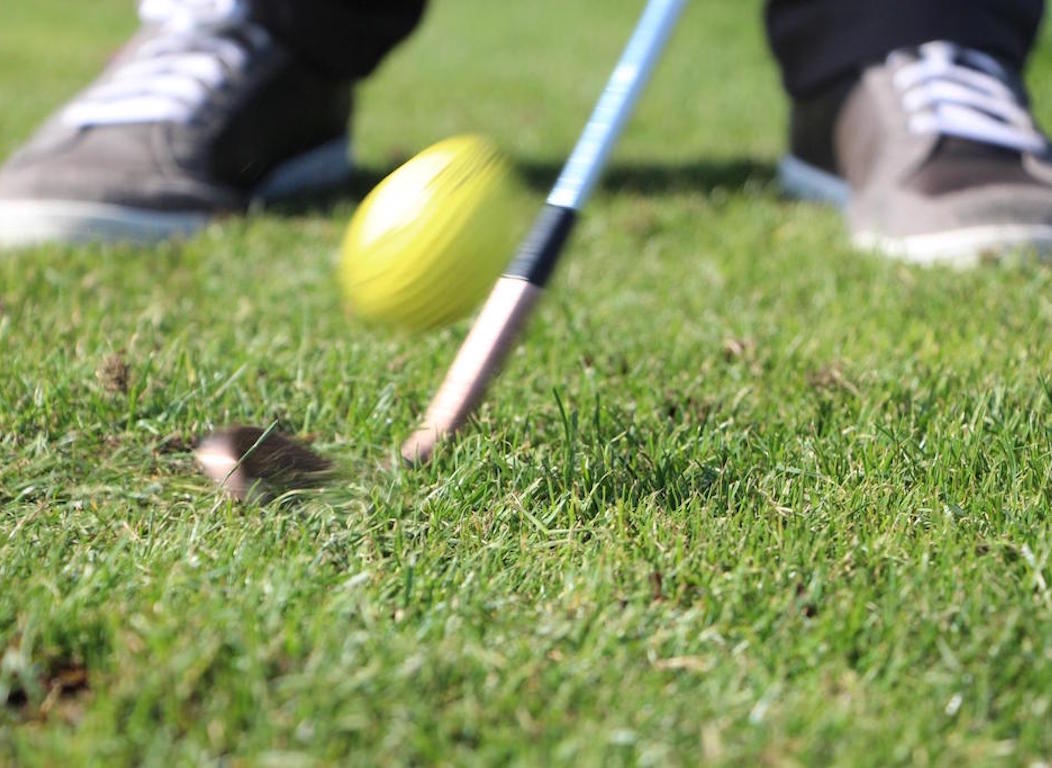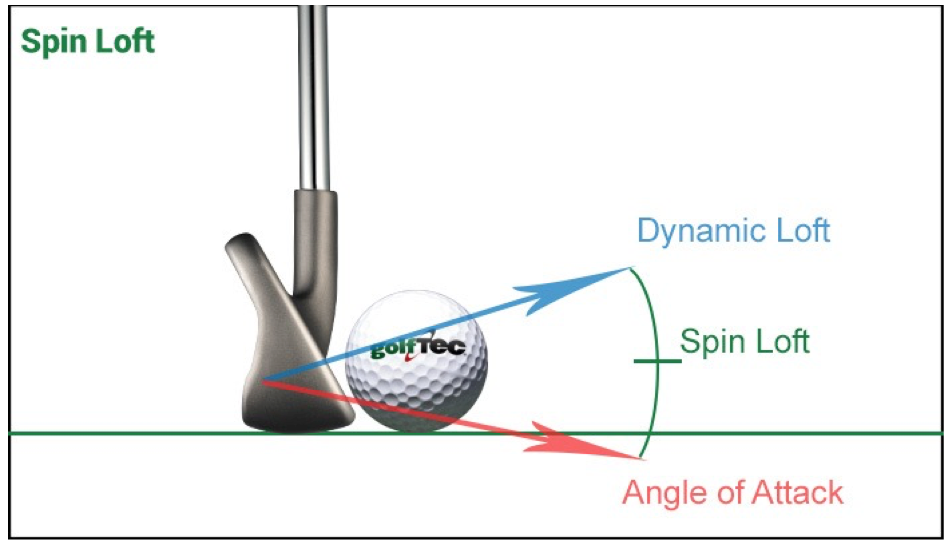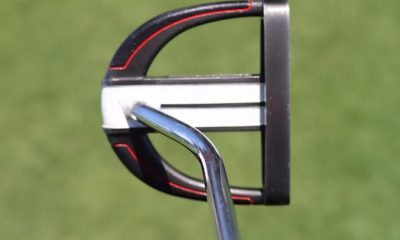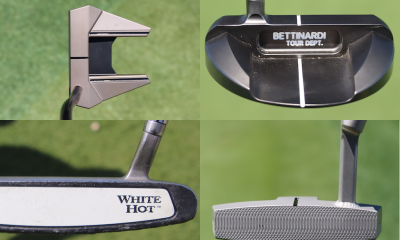Instruction
From the WRX Vault: The science of adding spin to your wedge shots

In addition to continuing to look forward to new content that will serve and engage our readership, we also want to showcase standout pieces that remain relevant from years past. In particular, articles with a club building or instruction focus continue to deliver value and convey useful information well after their publish dates.
We want to make sure that once an article falls off the front page as new content is covered it isn’t relegated to the back pages of our website.
We hope that you’ll appreciate and find value in this effort, and the first article from the GolfWRX Vault is a perfect example of a piece that not only remains relevant and engaging, but one that the author still gets questions about and routinely refers readers to.
This piece one of Tom Stickney’s earliest and most popular missives for GolfWRX. We selected it as one of the best pieces of 2015, and it’s still worth a read some four years laster—ball flight laws haven’t change, an we’re still eager to disseminate the right information to our audience!
A taste of Stickney’s piece…
“For as long as I can remember, golfers have been fascinated watching the professionals hit wedge shots into the green — especially when their shots land past the hole on the green, hop forward, and then zip back toward the hole. It’s a sexy shot that every golfer wants to have at his disposal.
“What I have learned from teaching golf for more than 20 years, however, is that relatively few golfers can actually hit a high-spinning wedge shot. One of the main reasons why? Few golfers actually understand how spin is created. The purpose of this article is to help golfers understand just that, as well as how they can improve their chances of hitting a PGA Tour-quality wedge shot.
How spin is created
“Since I starting using a Trackman launch monitor, my understanding of spin creation has grown exponentially. It has taught me and other teaching professionals that spin is created by specific, measurable factors.
“The main factor is called Spin Loft, which is calculated by subtracting “Angle of Attack,” or the amount of degrees a golfer hits up or down on a ball, from “Dynamic Loft,” which is the amount of loft (in degrees) on the club face at the moment of impact.”
- LIKE22
- LEGIT4
- WOW2
- LOL0
- IDHT1
- FLOP2
- OB1
- SHANK11
Instruction
Clement: Laid-off or perfect fade? Across-the-line or perfect draw?

Some call the image on the left laid off, but if you are hitting a fade, this could be a perfect backswing for it! Same for across the line for a draw! Stop racking your brain with perceived mistakes and simply match backswing to shot shape!
- LIKE0
- LEGIT0
- WOW0
- LOL0
- IDHT0
- FLOP0
- OB0
- SHANK1
Instruction
The Wedge Guy: The easiest-to-learn golf basic

My golf learning began with this simple fact – if you don’t have a fundamentally sound hold on the golf club, it is practically impossible for your body to execute a fundamentally sound golf swing. I’m still a big believer that the golf swing is much easier to execute if you begin with the proper hold on the club.
As you might imagine, I come into contact with hundreds of golfers of all skill levels. And it is very rare to see a good player with a bad hold on the golf club. There are some exceptions, for sure, but they are very few and very far between, and they typically have beat so many balls with their poor grip that they’ve found a way to work around it.
The reality of biophysics is that the body moves only in certain ways – and the particulars of the way you hold the golf club can totally prevent a sound swing motion that allows the club to release properly through the impact zone. The wonderful thing is that anyone can learn how to put a fundamentally sound hold on the golf club, and you can practice it anywhere your hands are not otherwise engaged, like watching TV or just sitting and relaxing.
Whether you prefer an overlap, interlock or full-finger (not baseball!) grip on the club, the same fundamentals apply. Here are the major grip faults I see most often, in the order of the frequency:
Mis-aligned hands
By this I mean that the palms of the two hands are not parallel to each other. Too many golfers have a weak left hand and strong right, or vice versa. The easiest way to learn how to hold the club with your palms aligned properly is to grip a plain wooden ruler or yardstick. It forces the hands to align properly and shows you how that feels. If you grip and re-grip a yardstick several times, then grip a club, you’ll see that the learning curve is almost immediate.
The position of the grip in the upper/left hand
I also observe many golfers who have the butt of the grip too far into the heel pad of the upper hand (the left hand for right-handed players). It’s amazing how much easier it is to release the club through the ball if even 1/4-1/2″ of the butt is beyond the left heel pad. Try this yourself to see what I mean. Swing the club freely with just your left hand and notice the difference in its release from when you hold it at the end of the grip, versus gripping down even a half inch.
To help you really understand how this works, go to the range and hit shots with your five-iron gripped down a full inch to make the club the same length as your seven-iron. You will probably see an amazing shot shape difference, and likely not see as much distance loss as you would expect.
Too much lower (right) hand on the club
It seems like almost all golfers of 8-10 handicap or higher have the club too far into the palm of the lower hand, because that feels “good” if you are trying to control the path of the clubhead to the ball. But the golf swing is not an effort to hit at the ball – it is a swing of the club. The proper hold on the club has the grip underneath the pad at the base of the fingers. This will likely feel “weak” to you — like you cannot control the club like that. EXACTLY. You should not be trying to control the club with your lower/master hand.
Gripping too tightly
Nearly all golfers hold the club too tightly, which tenses up the forearms and prevents a proper release of the club through impact. In order for the club to move back and through properly, you must feel that the club is controlled by the last three fingers of the upper hand, and the middle two fingers of the lower hand. If you engage your thumbs and forefingers in “holding” the club, the result will almost always be a grip that is too tight. Try this for yourself. Hold the club in your upper hand only, and squeeze firmly with just the last three fingers, with the forefinger and thumb off the club entirely. You have good control, but your forearms are not tense. Then begin to squeeze down with your thumb and forefinger and observe the tensing of the entire forearm. This is the way we are made, so the key to preventing tenseness in the arms is to hold the club very lightly with the “pinchers” — the thumbs and forefingers.
So, those are what I believe are the four fundamentals of a good grip. Anyone can learn them in their home or office very quickly. There is no easier way to improve your ball striking consistency and add distance than giving more attention to the way you hold the golf club.
More from the Wedge Guy
- The Wedge Guy: Golf mastery begins with your wedge game
- The Wedge Guy: Why golf is 20 times harder than brain surgery
- The Wedge Guy: Musings on the golf ball rollback
- LIKE86
- LEGIT13
- WOW6
- LOL1
- IDHT0
- FLOP4
- OB1
- SHANK8
Instruction
Clement: Stop ripping off your swing with this drill!

Not the dreaded headcover under the armpit drill! As if your body is defective and can’t function by itself! Have you seen how incredible the human machine is with all the incredible feats of agility all kinds of athletes are accomplishing? You think your body is so defective (the good Lord is laughing his head off at you) that it needs a headcover tucked under the armpit so you can swing like T-Rex?
- LIKE0
- LEGIT2
- WOW2
- LOL0
- IDHT0
- FLOP0
- OB0
- SHANK2
-

 19th Hole2 weeks ago
19th Hole2 weeks agoDave Portnoy places monstrous outright bet for the 2024 Masters
-

 19th Hole3 days ago
19th Hole3 days agoJustin Thomas on the equipment choice of Scottie Scheffler that he thinks is ‘weird’
-

 19th Hole2 weeks ago
19th Hole2 weeks agoTiger Woods arrives at 2024 Masters equipped with a putter that may surprise you
-

 19th Hole3 days ago
19th Hole3 days ago‘Absolutely crazy’ – Major champ lays into Patrick Cantlay over his decision on final hole of RBC Heritage
-

 19th Hole2 weeks ago
19th Hole2 weeks agoTwo star names reportedly blanked Jon Rahm all week at the Masters
-

 19th Hole1 week ago
19th Hole1 week agoReport: LIV Golf identifies latest star name they hope to sign to breakaway tour
-

 19th Hole1 week ago
19th Hole1 week agoNeal Shipley presser ends in awkward fashion after reporter claims Tiger handed him note on 8th fairway
-

 19th Hole1 week ago
19th Hole1 week agoBrandel Chamblee has ‘no doubt’ who started the McIlroy/LIV rumor and why

























Tom54
Sep 30, 2019 at 4:01 pm
Dave r Exactly agree. Whenever I get a chance to play on a decent course, at least one with nice tight fairways I always comment no wonder the pros make it look so easy. When the ball is sitting up nicely you can sweep it if you are a picker, or you can still go after it with a nice divot. When ball settles down in longer grass you only have one option and that’s to dig it out
Dave r
Sep 30, 2019 at 1:14 pm
Most courses I play we don’t have the luxury of fairways cut like greens. The average golfer playes off flyer lie fairways you try and spin a ball when its impossible to get clean contact on the ball. Ya if your club head speed is 130 mph you might get a ball to stop on the third bounce but spin good luck with that happening.
Mad-Mex
Sep 30, 2019 at 12:41 am
Clean contact made with a wedge whose grooves are clear of any debris or grass blades on a descending angle to a urethane covered golf ball,,,,
Who writes this garbage ?!?!?!
B
Sep 29, 2019 at 11:19 pm
Still doesn’t tell you how to do it